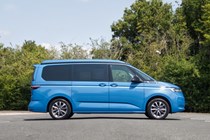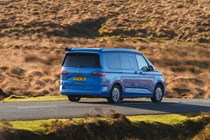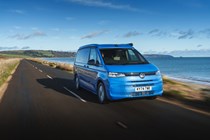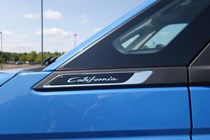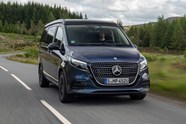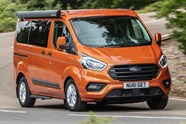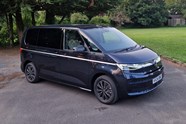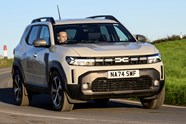
Volkswagen California review: the everyday campervan
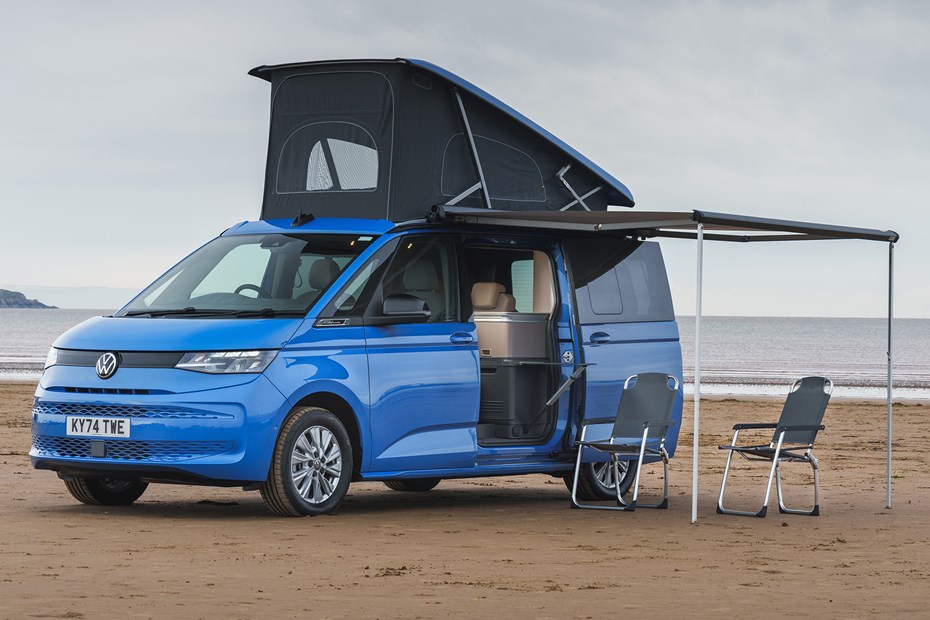
At a glance
| Price new | £66,425 - £85,399 |
|---|---|
| Used prices | £51,252 - £75,813 |
| Road tax cost | £620 |
Get an insurance quote with

|
|
| Fuel economy | 30.2 - 42.2 mpg |
| Miles per pound | 4.4 - 5.4 |
| Number of doors | 4 |
| View full specs for a specific version | |
Available fuel types
Petrol
Diesel
Hybrid
Pros & cons
- Car-based design improves the driving experience
- Sliding doors on both sides
- Packaging is very clever
- Less interior storage than before
- Single-burner cooker
- Slow-witted electric pop-top
Volkswagen California Campervan rivals
Overview
Should you buy a Volkswagen California?
For many people, it’s not even a question. You want a campervan? You get a Volkswagen California. It’s a cast-iron brand in its own right with a very loyal customer base and this latest one is a very good camper and an eminently usable everyday car.
There are lots of clever features such as the drawer-style fridge, outdoor shower and living space touchscreen control panel. The beds are comfortable, it’s warm and cosy, there’s a decent amount of interior storage space.
Being spun off from a car platform, it’s also much better to drive than its van-based predecessors. The ride is smoother, it feels more stable in corners, it’s quieter, it’s much more efficient. You can choose between petrol, diesel or plug-in hybrid power – the latter will appeal to company car users who want something more adventurous than an SUV.
There are compromises in a campervan this size, though, because it’s ultimately quite a small space to live in. You have to pack carefully and lightly, and some of the California’s living space features are rather finnicky to use. It doesn’t have the market to itself now, either. Citroen, Ford and Mercedes produce directly comparable campers of their own, not to mention the dozens specialist campervan converters out there. You can also get a more spacious coachbuilt motorhome for the same kind of money. Still, the California is the go-to campervan for a reason.
What’s new?
The latest T7 VW California was launched in late 2024. It’s the fourth-generation of California sold by VW, though the third built on the manufacturer’s Hanover production line. Controversially, it’s not based on the Transporter van, but the Multivan MPV in Long-body form. Why? The T7 Transporter is based on the Ford Transit Custom and built in the same Turkish factory which can’t be adapted to facilitate campervan production.
While some purists might be displeased by the switch to what could be perceived as a less rugged platform, spinning the California off from the same hardware found in the VW Golf and Tiguan – among many, many others – does have its benefits. Not least that it’s better to drive, more efficient and comes with more safety tech.
It also has two sliding rear doors – the old T6 California just had one, on the right-hand side – and is 20cm longer than before, so it has a more spacious interior. There’s now a larger drawer-style fridge and individual back seats rather than a bench; the living space can be controlled via the dashboard touchscreen, another on the right-hand C-pillar or by app.
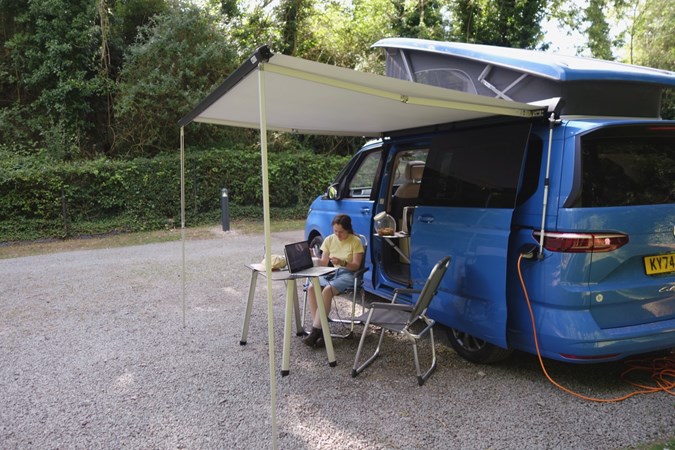
As before, the California is the mid-size option in VW’s camper range, which is bookended by the smaller Caddy California and larger Grand California. There are three trim levels to choose from: Beach, Coast and Ocean. They all come with Apple CarPlay/Android Auto connectivity, air conditioning, adaptive cruise control, and front and rear parking sensors. The key differences between them are their living space features and trim, which we’ll cover in more detail in the Interior, Tech & Comfort section of this review.
On top of that, there are three engine choices: petrol, diesel or plug-in hybrid. The latter has 4Motion all-wheel drive as standard; all three come with a seven-speed DSG dual-clutch gearbox. We should note at this point that the California isn’t just a campervan – it also functions very well as an everyday family car.
The California was once the only campervan of its type, but there are now several direct rivals sold through manufacturer dealers. Perhaps the best known is the Mercedes V-Class Marco Polo which is plusher and more expensive. There’s also the Ford Transit Custom Nugget, which is available in a larger size but has a flawed walk-through interior layout; and the Citroen Holidays which comes comprehensively equipped at a lower price. Check out our guide to all the factory-built campers.
We’ll also lump in campers – and proper motorhomes, for that matter – built by any number of specialists such as Elddis, Bailey and Hymer. They usually offer more bang for your buck, albeit without the reassurance of the living space being built by the vehicle’s manufacturer.
We have extensive experience of driving and living in the California, on the model’s international launch in Slovenia and in the UK. We’ve also clocked up a lot of miles in the Multivan it’s based on, spent weeks in the old T6 California, and stayed in the Marco Polo and Nugget. You can find out more about how we test cars at Parkers to reach the conclusions given here.
Over the following pages, we cover every aspect of the VW California experience including what it’s like to drive, how easy it is to live with – and in – and what the running costs are like before reaching our verdict.
Our thanks to the Caravan and Motorhome Club which kindly provided a pitch at its Cambridge Cherry Hinton site for the purposes of this test.



